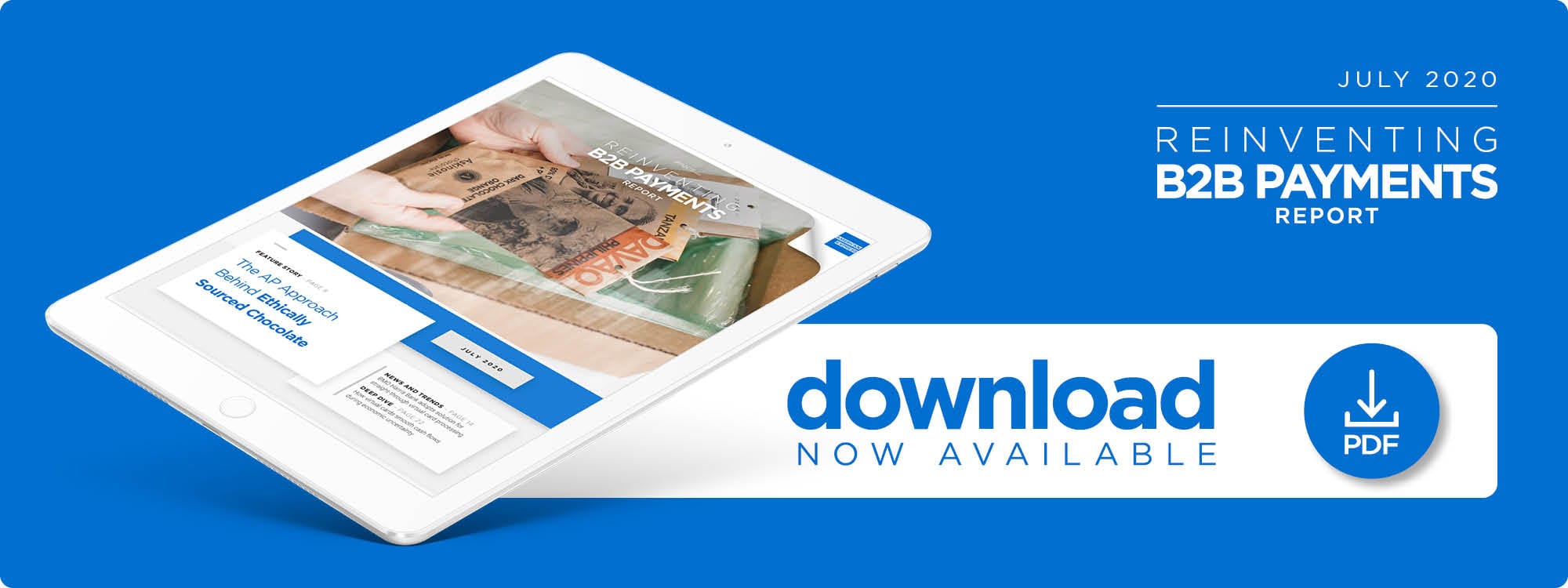Deep Dive: How Virtual Cards Can Ease Firms’ Cash Flow, Fraud Pains During The Pandemic

The pandemic and the associated economic downturn have forced businesses to rethink their B2B payments approaches as they confront new and existing financial strains.
Old-school paper checks are an established part of the space, with research finding that 80.8 percent of accounts payable (AP) departments used the method to pay suppliers in 2019. Paper checks can be expensive for buyers to issue and slow for suppliers to receive, however, and such pains are beginning to weigh more heavily on companies that are struggling during the crisis.
Many vendors wish to be paid on schedule or ahead of time to make ends meet and cope with losses, and check payments can be frustratingly sluggish. Buyers are meanwhile hoping to reduce their own costs, and the challenges both sides face could shift them further away from check payments. It costs AP departments an average of 82 cents to create a check and only 13 cents to generate digital payment, for example.
Companies are also confronting a rising tide of fraud, including a growing number of business email compromise (BEC) schemes. Bad actors launching these attacks can email buyers and pretend to be vendors, for example, requesting that suppliers’ bank account details be changed to those of the criminals perpetrating the scams. Invoice and payment fraud attempts via BEC scams rose 200 percent from April to May, revealing that fraudsters may have believed pandemic-driven disruptions would give them cover by making buyers less wary of payment practice adjustments to support shifts to remote operations. The growing fraud threat could drive companies to seek more secure B2B payment methods.
Buyers and suppliers facing new cash flow crunches and security risks during the economic downturn may find that updating payment approaches and abandoning paper checks can ease some strains. The following Deep Dive examines how shifting to virtual card payments helps businesses alleviate some frictions for buyers and suppliers alike.
Balancing Conflicting Cash Flow Needs
Both suppliers and buyers are struggling to safeguard their finances as the pandemic disrupts their operations. Cash-strapped vendors are finding it difficult to endure late payments, while many buyers are hoping to delay payments to retain more cash. Maintaining more working capital in their bank accounts enables the latter to earn greater interest and have more resources available to respond to changing circumstances.
The clash between these competing interests has been especially evident in the apparel industry. Consumer demand sharply declined during the crisis, which caused revenue shortages for most retailers. Many fashion brands are trying to shift some of their financial burdens onto suppliers by canceling orders, delaying vendor payments and reducing compensation.
Just one-fifth of fashion industry sourcing executives in an April survey said they were abiding by existing payment agreements for at least 75 percent of their orders, while 18 percent were not keeping up with any of their agreements, and 25 percent were delaying supplier payments for a majority of their purchases. Some textile retailers have sought to ease their budget strains by ballooning payment terms from the usual 60 days to as long as 150 days, while others have aimed to cancel and evade payment entirely. Apparel brands are aware that this deepens their suppliers’ financial hardships, with 45 percent of sourcing executives predicting in April that the majority of their suppliers would be “in financial distress” by October.
Some companies are abandoning paper checks and turning to virtual card payments to meet both buyers’ and suppliers’ payment timeline needs. Such transactions can settle in vendors’ accounts instantly, and they also enable buyers to promptly compensate suppliers while retaining funds until credit card bills are due. This effectively extends buyers’ payment timelines without burdening suppliers. Cardholders are typically required to pay off portions of their credit card balances each month or incur interest. Using these cards then lets them hold on to their funds for an additional month beyond their payments’ due dates to suppliers — or for longer should they not wish to pay off their card bills in full.
The method can grant buyers greater flexibility and control while potentially earning them savings as they can accrue more interest by keeping funds in their accounts for longer and netting card rewards that add up. Cards offering 0.5 percent cash back can earn companies $5,000 for every $1 million they spend, for example. Corporate treasury personnel have been aware of virtual cards’ benefits for some time, but the pandemic has made these tools more desirable, with 22.9 percent of AP professionals saying in 2019 that they would like to adopt ePayables — virtual cards that are designated for use with specific vendors.
Buyers have traditionally avoided transitioning to virtual card payments because some vendors have been reluctant to pay what can be a 2.5 percent per transaction processing fee. The pandemic may be pushing suppliers to rethink their reluctance, however, as the method can rapidly accelerate payment timelines.
Reducing Fraud
Buyers that are renegotiating payments to conserve their working capital cannot afford to lose funds to fraud. AP departments are frequent targets, too, with 90 percent of companies stating that their AP divisions see the greatest share of fraud issues. Such attacks are on the rise, with online fraud expected to cause $25.6 billion in losses this year.
Virtual cards can be a safer payment method, however, because buyers can limit cards’ transaction values to prevent potential abuse. Companies also typically generate single-use cards for each purchase, which ensures that fraudsters who manage to steal card details cannot reuse them. This setup also means that vendors are not storing clients’ card data on file, thus preventing buyers’ details from being compromised, even if vendors have been hacked.
This payment tool has been gaining greater attention, with projections made in 2018 estimating that virtual card spending would grow at a 21 percent compound annual growth rate (CAGR) between 2017 and 2022. This adoption could accelerate further as pandemic-driven financial realities prompt more companies to seek secure payment options that support both parties’ cash flow needs.

